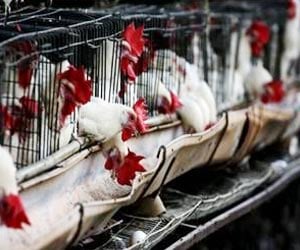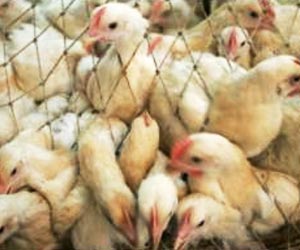Cat owners are at a greater risk of catching bird flu, as the deadly virus is most likely to mutate in felines, experts say
Cat owners are at a greater risk of catching bird flu, as the deadly virus is most likely to mutate in felines, experts say.
A study on cats in areas where outbreaks have occurred found that the virus is changing in felines more quickly than thought. It raises the chilling prospect that the disease could soon easily be spread from cats to people, leading to a human pandemic. And it shows that should bird flu ever break out in Britain, cat owners should be particularly on their guard.Scientists point to the alarming precedent of the Spanish flu pandemic, which killed tens of millions at the end of the First World War. It spread from birds to humans via pigs.
Dr Albert Osterhaus of Erasmus University in Rotterdam said: "We know the 1918 pandemic was a bird flu virus that adapted to mammals in some intermediate mammalian host, possibly pigs. Maybe for H5N1 the intermediate host is cats."
Two other viruses which spread all over the world - the 1957 Asian flu and the Hong Kong flu of 1968 - also mutated in pigs.
He said that if bird flu strikes, cats should be kept away from birds and their droppings. He advised that all pets should be kept indoors and if they become ill they should be tested immediately for the bird flu virus.
The latest study by an Indonesian university follows reports of unusually large numbers of dead cats being found near outbreaks of H5N1, the bird flu virus.
Advertisement
Dr Chiarul Anwar Nidom of Airlangga University took blood samples from 500 cats living near poultry markets in four areas of the island of Java. All these areas had recently had outbreaks of H5N1 in poultry and people.
Advertisement
Dr Nidom said that many other infected cats would have died from the virus, meaning that many more than 20 per cent may have picked up the infection. Tests in 2004 showed for the first time that cats could catch the virus from each other, not just by eating infected birds.
Scientists are concerned that as the virus replicates in cats it will further adapt to mammals' bodies.
This in turn will give H5N1 the ability to spread more efficiently to people and then from person to person - unleashing a devastating human pandemic.
The new study comes after reports that the virus may already be developing resistance to Tamiflu, the powerful antiviral drug on which the NHS is relying to stem the spread of the disease.
In late December, a man and his niece died of H5N1 flu in Egypt - even though they had been taking Tamiflu. Both were found to be infected with a mutated version of the virus, making it partially resistant to the drug. They had been on Tamiflu for only two days - meaning the virus may have been resistant before they caught it.
The news is a concern because it had previously been thought that Tamiflu-resistant strains are not usually contagious because the mutations that make it resistant also cripple it.
Scientists predict that once the virus mutates to allow it to spread between humans, it will take between six and eight months to develop a new drug to combat it.
Source: Bio-Bio Technology
SRI






